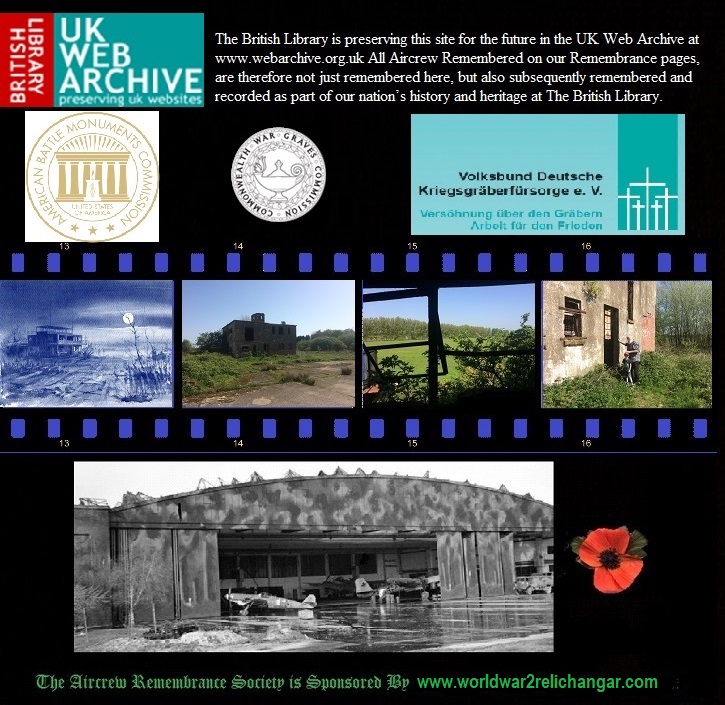Date: 19th April 1944
Time: 12.50 a.m.
Unit: 1 Staffel/Kampfgeschwader 51
Type: Messerschmitt Me 410A-1
Werke/Nr.420293
Code: 9K + KH
Location: St. Nicholas Churchyard, Brighton, Sussex.
Pilot: Hauptmann. Richard Pahl 65112/198 Killed
Born 08.02.1920 in Ludwigshafen.
Radio/Op: Feldwebel. Wilhelm Schuberth 65125/37 Killed
Born 15.03.1920 in Kulmbach.
REASON FOR LOSS:
This aircraft was shot down by W/C E. D. Crew DFC and Bar and W/O W. R. Croysdill in a Mosquito of No.96 Squadron.
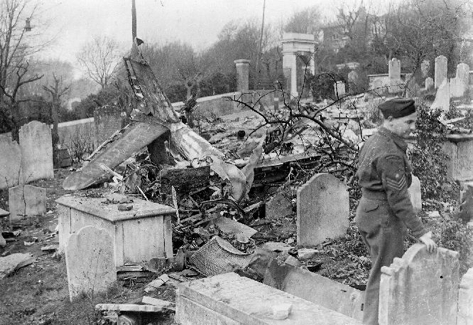 ccc
ccc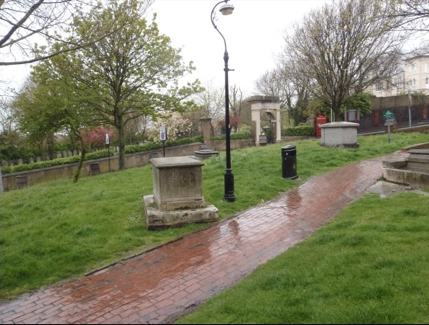
Then & Now pictures taken at the scene of the crash (Parry/Youngs)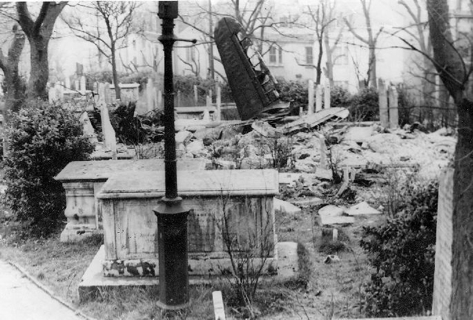 ccc
ccc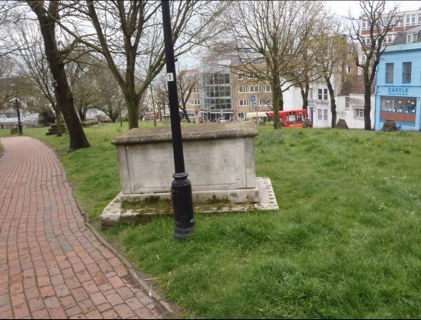
Brighton & Hove Herald - Saturday 22nd April 1944.
NAZI NIGHT RAIDER CRASHES IN CHURCHYARD OF SOUTH COAST TOWN NO CASUALTIES BUT HOUSES DAMAGED
Believed to have been hit over London, a Messerschmitt fighter-bomber, attempting to return to its base, crashed early on Wednesday morning in a South Coast town. The crippled plane fell in the roadway and crashed through a wall into the church-yard an ancient and historic church, the "mother church" of the town. The pilot - who was wearing an Iron Cross - was killed, his body being found hanging with his parachute on the branches of a tree on the opposite side of the road. Fortunately there were no civilian casualties, though a number of residents in the district were temporarily evacuated from their homes owing to the presence of one unexploded bomb.
N.F.S and wardens were quickly on the scene, and firemen fought the flames despite the danger of exploding ammunition. Flares carried by the plane also ignited. The aircraft first struck a lamp standard, which was bent in the direction of the church and then crashed into a wall bounding the churchyard. Debris, including one of the wheels of the plane, fell on the pavement; the engine rested on top of the broken wall; and the tail and parts of the fuselage fell among the tombstones in the cemetery. Many of the graves were disturbed and headstones were knocked over and broken. The Messerschmitt was returning from Tuesday nights raid on London, in which 14 raiders were destroyed. Eye witnesses state that when it appeared over the north part of the town, heading east, its engine was coughing and spitting. The plane was evidently in trouble, having apparently been hit by flak. Another account is that the rattle of cannon fire was heard shortly before the Messerschmitt dived to earth. There had been great activity in the air from hundreds of our machines which were heard crossing and re-crossing the coast.
"I was asleep in bed when I was awakened by the terrific noise of the plane," said one eye witness.
" I thought the plane was sure to hit the house. Suddenly there was a crash, and the whole neighbourhood was lit up by a vivid green light as one of the flares became ignited. A series of small explosions followed as the ammunition went off, and the whole incident resembled a fireworks display." Another resident said: " I was looking through the window when I heard the German plane, I then heard what I thought was the rattle of cannon fire and saw the bomber falling. As soon as it hit the ground the bomber went up in flames. Flares in the machine caught alight, and I heard the popping of exploding ammunition."
NEAR CHILDRENS HOSPITAL
The plane after crashing burnt itself out, and fortunately only slight damage was done to surrounding property. The incident happened some two hundred yards away from a children’s hospital, which escaped damage. The matron said: " The children are taken into our underground hospital every night, and none of them heard the bomber come down. It was not necessary for the hospital to be evacuated, and the children were back in the wards the same morning." The German pilot is understood to have had a shrapnel wound in the head.
In addition to the Iron Cross (First Class), awarded in 1939, he was wearing a medal awarded for service in the Crimea. This medal was marked "Crimea 1941-42". On the pilot's tunic were also ribbons for other decorations.
RAF Intelligence revealed the following at the crash site; 19/4/44 00.50 hrs.
This aircraft was crossing the coast on its way to its target when it was intercepted by a Mosquito at 24,000 ft. One four second burst caused the starboard wing tanks to explode and starboard engine to catch fire, the aircraft dived almost vertically into the ground and crashed amongst tombstones of a churchyard and was burned out. Remains of candle flares were found amongst the wreckage, so this aircraft was probably a pathfinder.
The pilot held the Crimea badge.
Pilot: Haupt Richard Pahl EKI +. Bailed out but chute had opened too late.
W/T: Fw Wilhelm Schuberth 65125/37 +. Bailed out over the sea and drowned.
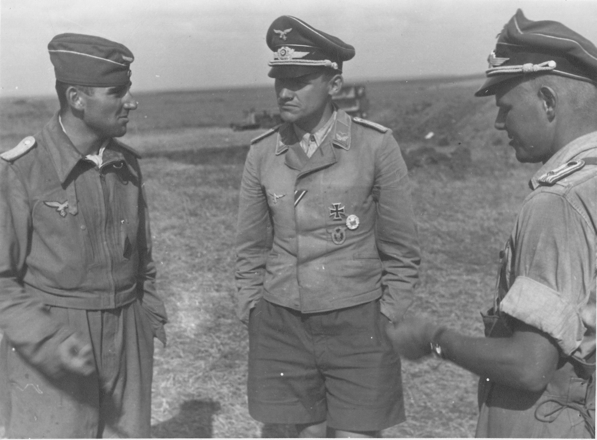
Lt.Niklaus Dold, Lt.Richard Pahl (KIA 19.4.1944 England) and Oblt.Johannes Richter (MIA Russia 17.09.1942) (Millert).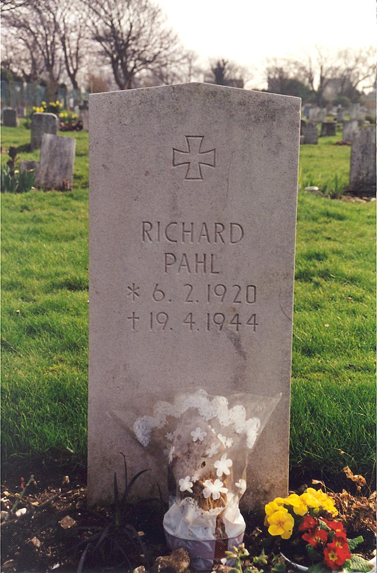
Richard Pahl lies in the Brighton Borough Cemetery, Bear Road, Grave Z.G.P. 9.
Wilhelm Schuberth's body was recovered from the sea on the 20.04.44 and originally buried in St. Mary's Churchyard, Friston. Since been re-interred at the Deutsche Soldatenfriedhof Cannock Chase. Block 4. Grave 161.
Researched & compiled by Melvin Brownless with special thanks to Rene Millert and Simon Parry for use of photos from their personal collections, May 2013.
